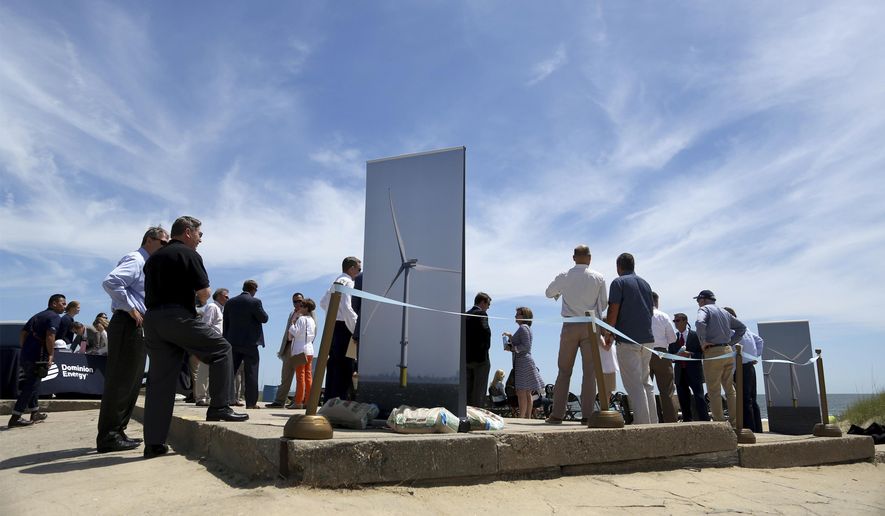VIRGINIA BEACH, Va. | Twenty-seven miles off the coast of Virginia, Dominion Energy is preparing for the future of electricity generation.
Dominion, one of the largest producers of electricity in the southeastern U.S., is constructing 180 wind turbines deep out in the Atlantic Ocean. When operational in 2026, Dominion’s Coastal Virginia Offshore Wind project will produce enough electricity to power 660,000 homes annually.
“When up and running, the turbines will provide electricity roughly equal to that used by 25% of our customer base,” said John Larson, the director of public policy and economic development at Dominion.
The turbines, which at 800 feet high rise taller than the Washington Monument, will be the largest installed in federal waters. When completed, the turbines will span an area of 85,000 football fields — nearly the same size as the city of Tampa, Florida.
Dominion estimates the project will avoid adding up to five million tons of carbon dioxide into the atmosphere annually.
Not only is the project green, but it is expected to be one of the largest job generators in Virginia’s Hampton Roads region. Overall, economic agencies estimate the project will create 1,100 “direct and indirect jobs.”
“Each wind turbine is like a mini-power plant,” Mr. Larson said. “There’s a lot of complexity that goes into its installation and operation.”
The project, which is awaiting approval from both the state and federal government, is likely to be a multi-billion-dollar endeavor. The two pilot wind turbines Dominion has already installed off the coast of Virginia Beach cost $300 million.
Dominion says the approval process will likely take upwards of three years.
At the federal level, the project dovetails with President Biden’s pledge to lower greenhouse gas emissions by more than 50% by 2030. To meet the goal, the White House is specifically targeting utility companies, while also proposing to spend $3 billion on offshore wind.
Mr. Biden has proposed a 100% carbon-free electricity mandate by 2035. The policy explicitly targets the coal and natural gas industries, which produce 63% of all electricity consumed in the U.S., according to the Energy Information Administration.
The shift could prove momentous, given that electricity generation makes up 25% of all U.S. emissions.
“We need to tell the utility world, our power system, where they need to go,” Gina McCarthy, the White House national climate adviser and former EPA administrator in the Obama administration, said recently.
Proponents and critics alike say a substantial cut in the electricity sector is onerous, given where utilities are going on their own.
Producers already have shifted toward natural gas, which generates fewer emissions than coal, and are significantly curbing their reliance on fossil fuels. In 2020, more than 39% of all U.S. electricity was generated from carbon-free sources such as nuclear power and hydroelectricity.
“The company has a net-zero commitment, we’re very much aligned with where federal policy looks like it might go,” said Mr. Larson.
Overall, renewables are the U.S.’s fastest-growing energy sources, increasing by nearly 100% over the last 20 years.
Wind farms, both offshore and on land, are a main focus for the energy industry. In 2016, the first approved and operational offshore wind farm, called Block Island, was launched off the coast of Rhode Island.
Since then, nearly a dozen other projects in the Atlantic Ocean, including the one proposed by Dominion, have been planned. The Biden administration is also backing a massive offshore wind project in the Pacific Ocean off the coast of California.
But such projects have not been without their share of controversy.
Often offshore winds farms receive significant opposition from local communities. Residents argue the wind turbines harm wildlife, like fish and birds, and spoil the serene beauty of local landscapes.
The latter argument was made by the late Democratic Sen. Ted Kennedy in opposing the building of 130 wind turbines off the coast of Massachusetts.
• Haris Alic can be reached at halic@washingtontimes.com.




Please read our comment policy before commenting.